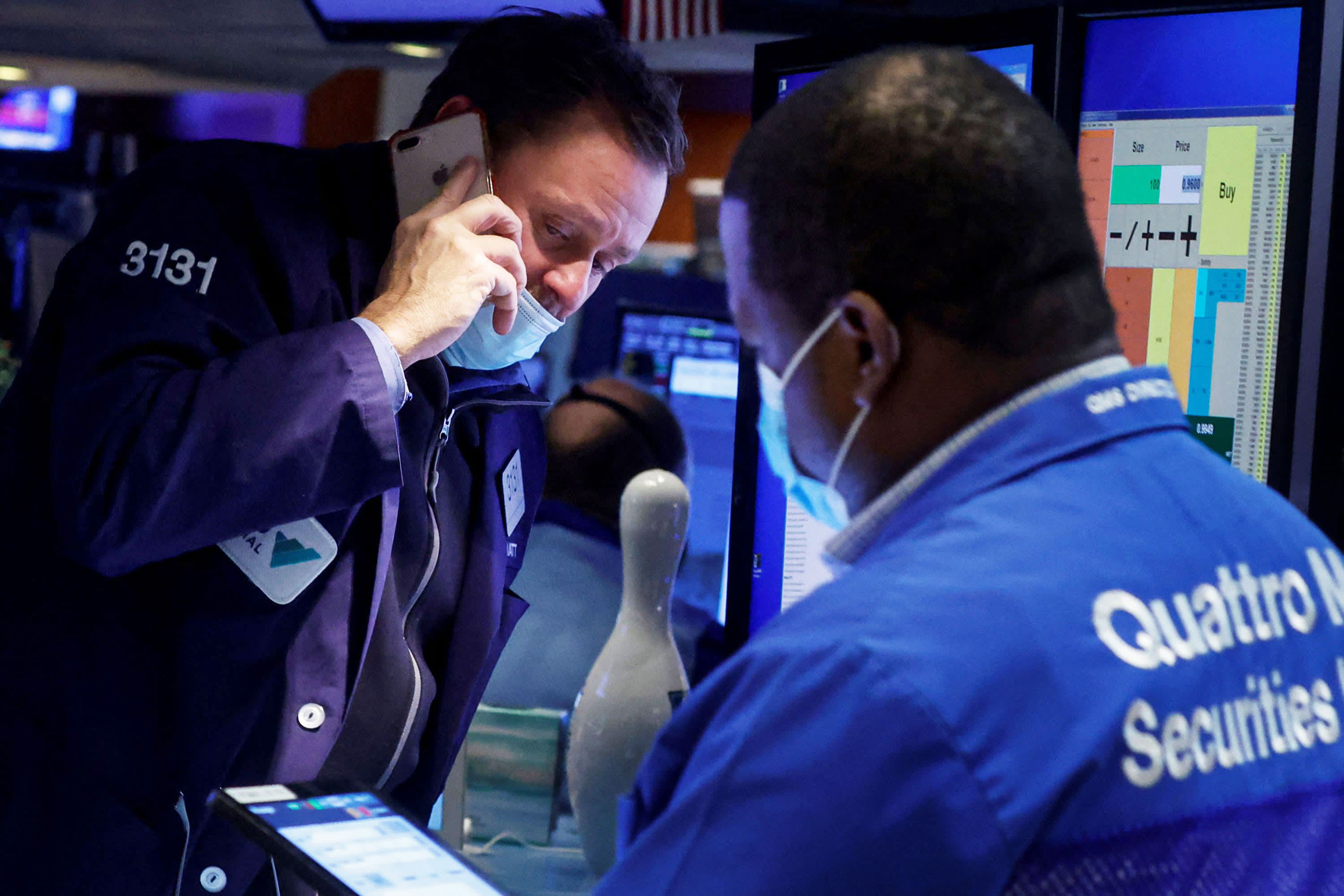Dow falls more than 400 points in 7th straight down day, S&P 500 pullback reaches 10%

U.S. stocks fell Monday following the S&P 500’s worst week since March 2020, as investors awaited more corporate earnings results and a key policy decision from the Federal Reserve.
The Dow Jones Industrial Average lost about 470 points, or 1.7%, falling for a seventh straight day. The S&P 500 dipped 1.8%. The benchmark is down more than 10% from its intraday high. The Nasdaq Composite declined 2.2%, falling deeper into correction territory.
The market action Monday followed a brutal week on Wall Street in the face of mixed company earnings and worries about rising interest rates.
Monday’s pullback put the S&P 500 down more than 9% this month, on pace for its worst monthly decline since March 2020 and worst January performance ever. The Dow was also headed for its biggest one-month loss since March 2020, falling more than 7%. The Nasdaq, meanwhile, has dropped roughly 14% in January and is on pace for its worst month since October 2008 — when it plunged 17.7%.
The CBOE Volatility Index (VIX), known on Wall Street as the market’s “fear gauge,” hit its highest level since November 2020, reaching an intraday high of 37.95.
The fourth-quarter earnings season has been a mixed bag. While more than 74% of S&P 500 companies that have reported results have topped Wall Street estimates, a couple of key firms let down investors last week, including Goldman Sachs and Netflix.
“What had initially been a stimulus withdrawal-driven decline morphed last week to include earnings jitters,” Adam Crisafulli, founder of Vital Knowledge, said in a note. “So investors are now worried not just about the multiple placed on earnings, but the EPS (earnings-per-share) forecasts themselves.”
Investors are anticipating a slew of high-stakes earnings reports from mega-cap tech companies this week. Microsoft fell 2.7%, Apple lost 2.1% and Tesla pulled back 5% ahead of the quarterly reports.
Peloton shares rebounded 2% following news that activist investor Blackwells is calling for the interactive fitness company to fire CEO John Foley and to seek a buyer.
Only 22 stocks in the S&P 500 traded in positive territory Monday.
Riskier assets are selling off this year as investors brace for the Fed to tighten monetary policy. Bitcoin dropped more than 8% over the weekend, wiping out nearly half of its value at its record high reached in November. The price fell another roughly 4% Monday morning below $34,000.
Investors are eyeing the Fed’s policy meeting, which wraps up on Wednesday. Market participants will be looking for any signals on how much the central bank will raise interest rates this year and when it will start.
The Federal Open Market Committee, which sets interest rates, meets with expectations that it won’t act at this meeting but will tee up the first of multiple rate hikes starting in March. In addition, the Fed is expected to wrap up its monthly asset purchase program that same month.
At his post-meeting news conference, Chairman Jerome Powell also could signal when the Fed will start to unwind its mammoth balance sheet.
Goldman Sachs said over the weekend that it sees risks rising that the Fed could enact even more than the four quarter-percentage-point hikes that the market has priced in for this year. The firm also said the Fed might start running off the nearly $9 trillion in assets it is holding in July.
Bond yields have surged in the new year in anticipation of Fed rate hikes, which partly triggered the drastic sell-off in growth-oriented tech shares. While the 10-year Treasury yield finished last week lower around 1.76%, the benchmark rate has jumped about a quarter of a percentage point in 2022.
“The big story so far in 2022 has been the rapid move higher in interest rates, which is prompting investors to re-assess valuations for some of the most expensive segments of the market and rotate into value stocks,” said David Lefkowitz, head of equities Americas at UBS Global Wealth Management.



